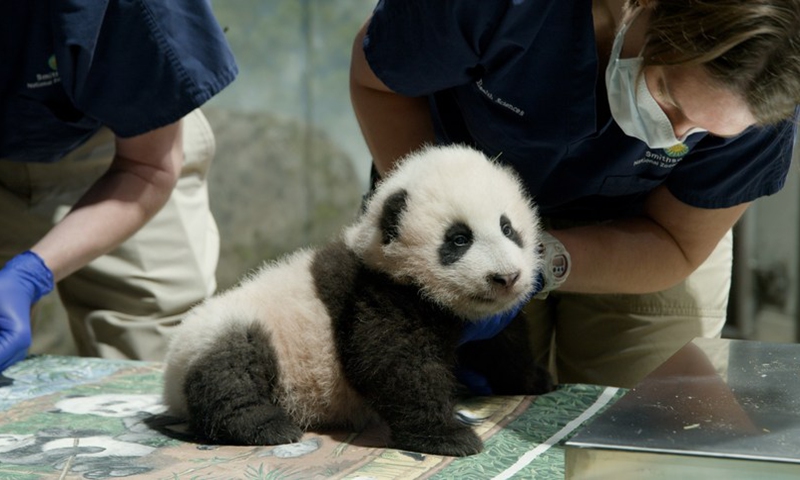U.S. zoo extends giant panda cooperative research agreement with Chinese partner
Source: Xinhua Published: 2020/12/8 8:49:41

Photo posted on Dec.7, 2020 shows giant pandas, Mei Xiang (L) and Tian Tian, at Smithsonian's National Zoo in Washington, D.C., the United States.(Photo: Xinhua)

Undated photo taken on November, 2020 shows the giant panda cub "Xiao Qi Ji" at Smithsonian's National Zoo in Washington, D.C., the United States.(Photo: Xinhua)
The Smithsonian's National Zoo announced on Monday that it has extended its giant panda cooperative research agreement with the China Wildlife and Conservation Association.
The three-year extension allows female giant panda Mei Xiang, male giant panda Tian Tian, and their cub Xiao Qi Ji, born at the National Zoo earlier this year, to continue to live in Washington, D.C. until Dec. 7, 2023.
"Our long-standing collaboration with Chinese colleagues to study, care for and save the giant panda will now pass the half-century mark," Steve Monfort, John and Adrienne Mars Director of the Smithsonian's National Zoo and Conservation Biology Institute, said in a statement.
"Along with millions of Americans, I look forward to the next three years, watching Xiao Qi Ji grow and making further strides in conservation and in our understanding of giant pandas," Monfort added.
The National Zoo received its first pair of giant pandas, dubbed as China's "national treasure," in 1972 as a gift from the Chinese government.
Mei Xiang and Tian Tian, the National Zoo's second pair of giant pandas, have lived there since Dec. 6, 2000, during which the female has given birth to four surviving cubs, all sired by the male.
With the birth of Xiao Qi Ji on Aug. 21, Mei Xiang, 22, became the oldest giant panda to give birth in North America.
Due to the COVID-19 pandemic, the National Zoo, part of the Smithsonian Institution, a renowned U.S. museum and research complex, is temporarily closed to the public.
Posted in: AMERICAS